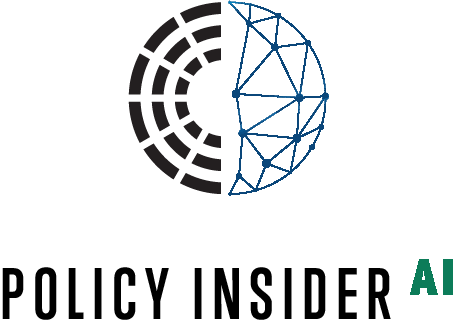In EduRanks.com current ranking of global public policy programs, it’s striking to see the dominance of UK and US universities, while many institutions in the European Union, despite their strong overall reputations, rank lower. This observation prompts an intriguing “chicken and egg” question: Are universities in cities like Berlin, Paris, Rome, and Madrid falling behind because the fields of advocacy and lobbying remain more traditional and slower to innovate? Or is the slow evolution of these professional fields a result of outdated academic approaches?
The Landscape of Public Policy Education
UK and US universities like the London School of Economics (#1), Berkeley’s Goldman School (#2) and Harvard Kennedy School (#4) consistently top the rankings for public policy education. These institutions are known for their cutting-edge curricula, extensive networks, and strong ties to modern advocacy practices. Students are exposed to the latest trends in policy-making and lobbying, ensuring they are well-prepared for contemporary challenges.
In contrast, many universities across the EU, including Germany, Italy, France, and Spain, do not perform as well in public policy rankings despite their strong academic reputations. To illustrate this, here are the universities ranked highest for public policy for:
- Germany: The University of Mannheim (#238 in the world) and the Freie Universität Berlin (#181) rank lower in public policy compared to their overall academic standings.
- Italy: Universities such as the University of Bologna (#102) and University of Milan (#159), despite their historical prestige, also rank lower in public policy.
- France: Institutions like Science Po (#277), Université de Paris 1 (Panthéon-Sorbonne, #379) face similar challenges in the rankings.
- Spain: The Autonomous University of Barcelona (#220) and the University of Barcelona (#255) are also not as competitive in public policy.
This disparity suggests a potential disconnect between public policy education, academic training and the practical demands of the policy-making world. The question arises: is the traditional approach in these universities limiting their ability to innovate and adapt to new advocacy methods?
Advocacy and Lobbying: The State of Play
In cities like Berlin, Paris, Rome, and Madrid, lobbying and advocacy are often perceived as domains dominated by older, more established professionals. Door-Opening Lobbying is still dominant in these countries. This “grey hair” dominance can hinder the influx of new ideas and approaches, creating a conservative environment resistant to change. This traditionalist atmosphere is often perpetuated by the “door openers“—influential figures who facilitate access to key decision-makers but may resist progressive change. Furthermore, the prevalence of “revolving doors,” where individuals move between roles in government and lobbying, often reinforces existing power structures and conservatism.
As a result, the professional landscape in these regions may not demand the same level of innovation and modernization from academic institutions, creating a cycle that perpetuates the status quo. This dynamic can stifle the development of new advocacy strategies and hinder the evolution of academic programs designed to prepare future policy-makers.
Only since the past decade, more innovative firms have entered the market with advocacy approaches vs. old-school lobbying approaches. This means that advocacy is more involving, consensus-focused, transparent versus partisan behind-closed-doors-lobbying which often enters at a late stage in the political decision-making process and focuses on influencing dossiers and is politically and ideologically more confrontational.
Breaking the Cycle
For universities across the EU to climb the ranks in public policy education and better prepare their students, they must actively engage with the evolving landscape of advocacy and lobbying. This involves integrating modern tools and techniques into their curricula, fostering partnerships with innovative policy-makers, and encouraging a culture of continuous improvement and adaptation.
Examples of actions that can be taken include:
- Modernizing Curricula: Integrating contemporary tools and techniques into the programs.
- Fostering Partnerships: Building strong connections with innovative policy-makers and organizations.
- Encouraging Continuous Improvement: Promoting a culture of adaptation and forward-thinking among faculty and students.
Conversely, the advocacy and lobbying sectors in these regions must also open their doors to new ideas and fresh talent. By valuing and integrating insights from younger, well-trained professionals, they can drive progress and innovation in the field. This requires a shift in several key areas:
- Emphasizing the Value of Good Ideas: Prioritizing the quality and potential impact of ideas over the seniority or traditional influence of their proponents. Fresh perspectives can often offer innovative solutions to persistent problems.
- Encouraging Thinking Outside the Box: Cultivating an environment where unconventional approaches are not only accepted but encouraged. This includes fostering creativity and encouraging professionals to explore new methodologies and strategies.
- Prioritizing Evidence Over Network: Moving away from decision-making based solely on established networks and relationships. Instead, focusing on evidence-based approaches that rely on data and research to guide policy and advocacy efforts. Read more about the impact of AI and Big Data.
By implementing these changes, the advocacy and lobbying sectors can break the cycle of conservatism and create a more dynamic, effective policy-making environment. This approach can lead to more responsive and adaptive policies that better address the needs and challenges of the contemporary world. Furthermore, it can help bridge the gap between academia and practice, ensuring that innovative academic insights are effectively translated from public policy education into real-world policy solutions.
Conclusion
The interplay between academia and professional practice is crucial in shaping the future of public policy and advocacy. To break the cycle, both universities and the lobbying sector in regions like Germany, Italy, France, and Spain need to evolve simultaneously. Only by embracing change and fostering innovation on both fronts can they achieve the recognition and effectiveness seen in their UK and US counterparts. The path forward requires a collaborative effort to modernize and adapt, ensuring that future generations are well-equipped to tackle the complex challenges of policy-making and advocacy in an ever-changing world.
Besides the EU-sponsored colleges of Bruges and Florence, a handful of EU-based universities have embraced ‘public policy’ as a mainstream educational subject that includes items such as modern law-making, policy and opinions shaping, and policy advocacy as integral courses. These universities become then the most successful ‘exporters’ of young professionals in the European capitals and in Brussels.
About EduRank.com
EduRank.com is a comprehensive platform that ranks universities and colleges globally based on various metrics such as academic performance, research output, and reputation. It aggregates data from multiple sources, including publication citations, academic surveys, and web traffic, to provide an in-depth analysis of higher education institutions. EduRank aims to help students make informed decisions about their education by offering detailed rankings and comparisons across different fields of study and geographical regions. Its user-friendly interface and extensive database make it a valuable resource for prospective students, educators, and policymakers seeking to understand the landscape of global higher education.
However, some criticisms of EduRank have surfaced. The platform’s heavy reliance on metric-based rankings, without incorporating surveys or expert opinions, has been noted as both a strength and a limitation. This approach ensures transparency and reduces biases that might arise from subjective inputs but might overlook qualitative aspects of university performance. Additionally, the non-academic prominence and alumni popularity indicators, while innovative, might not fully capture the academic quality and teaching excellence of institutions. These factors are important to consider when using EduRank as a primary tool for evaluating universities.


